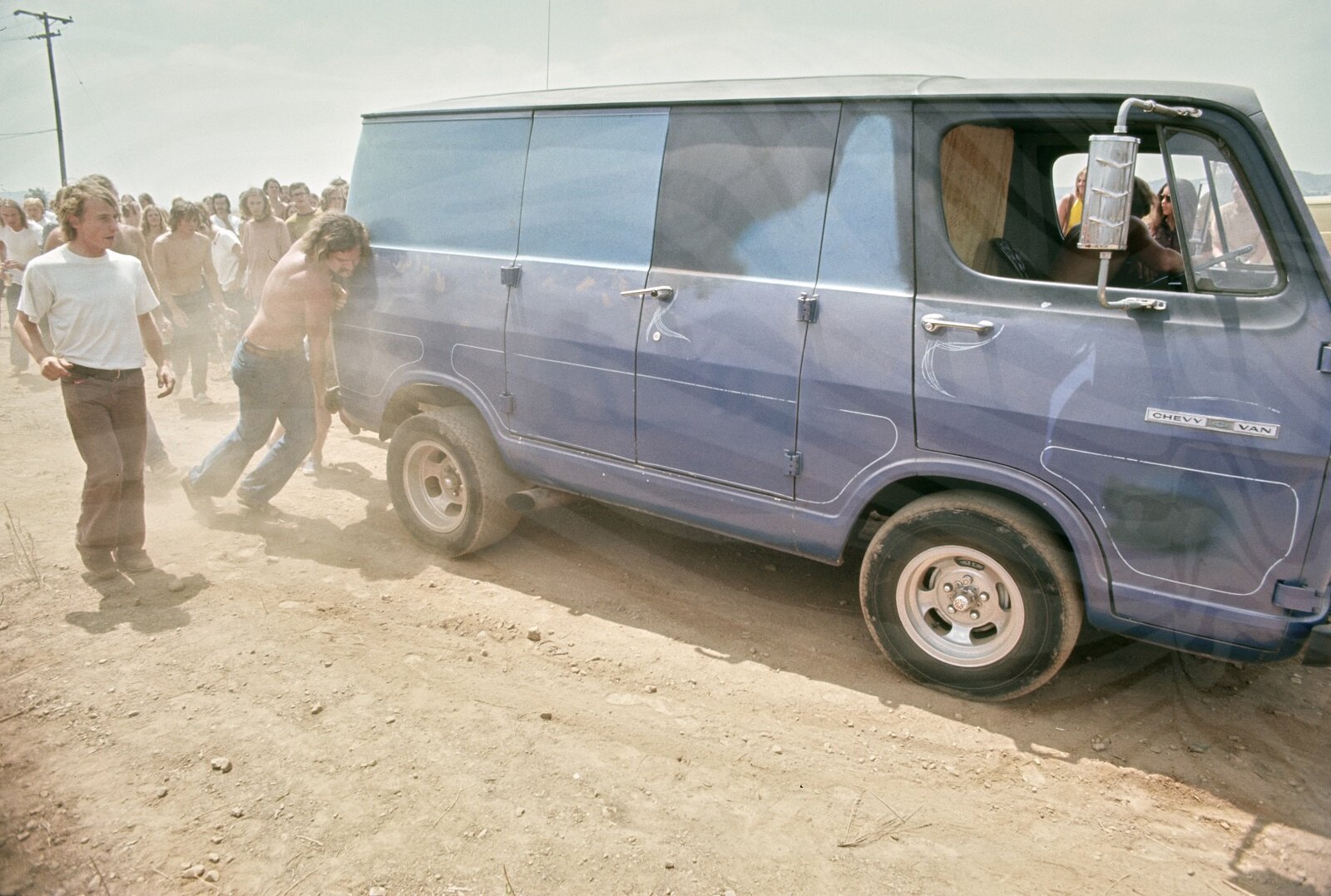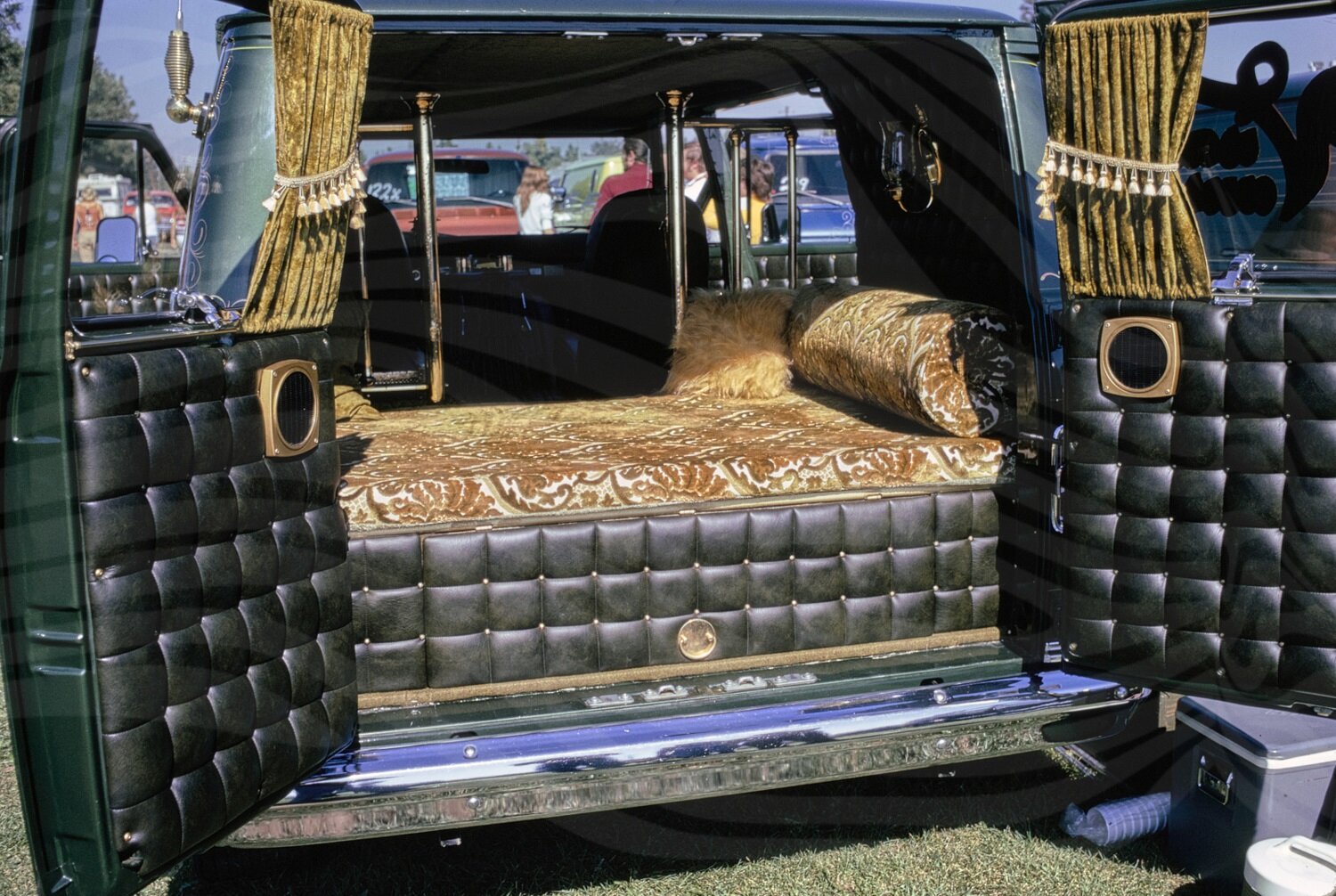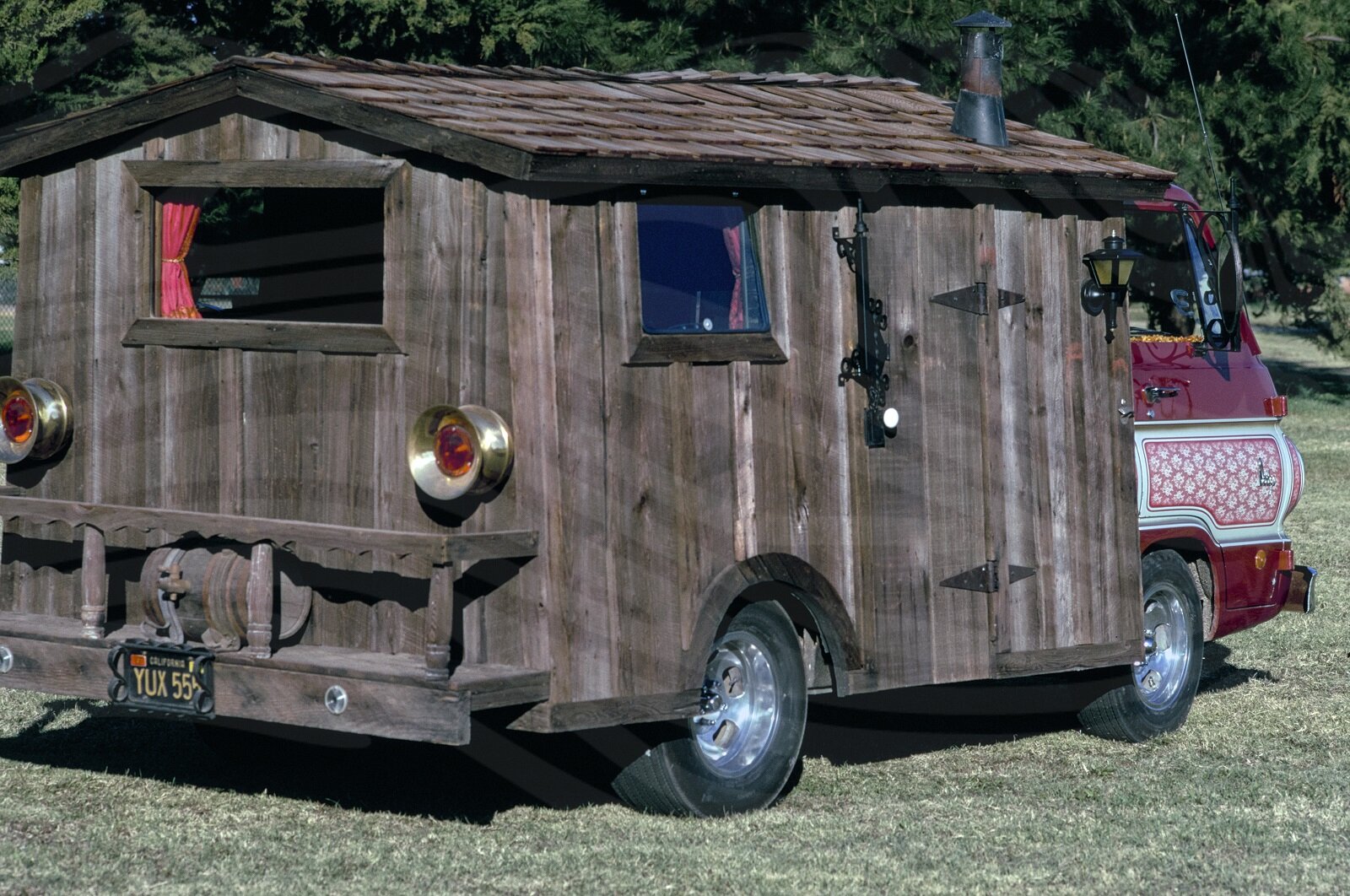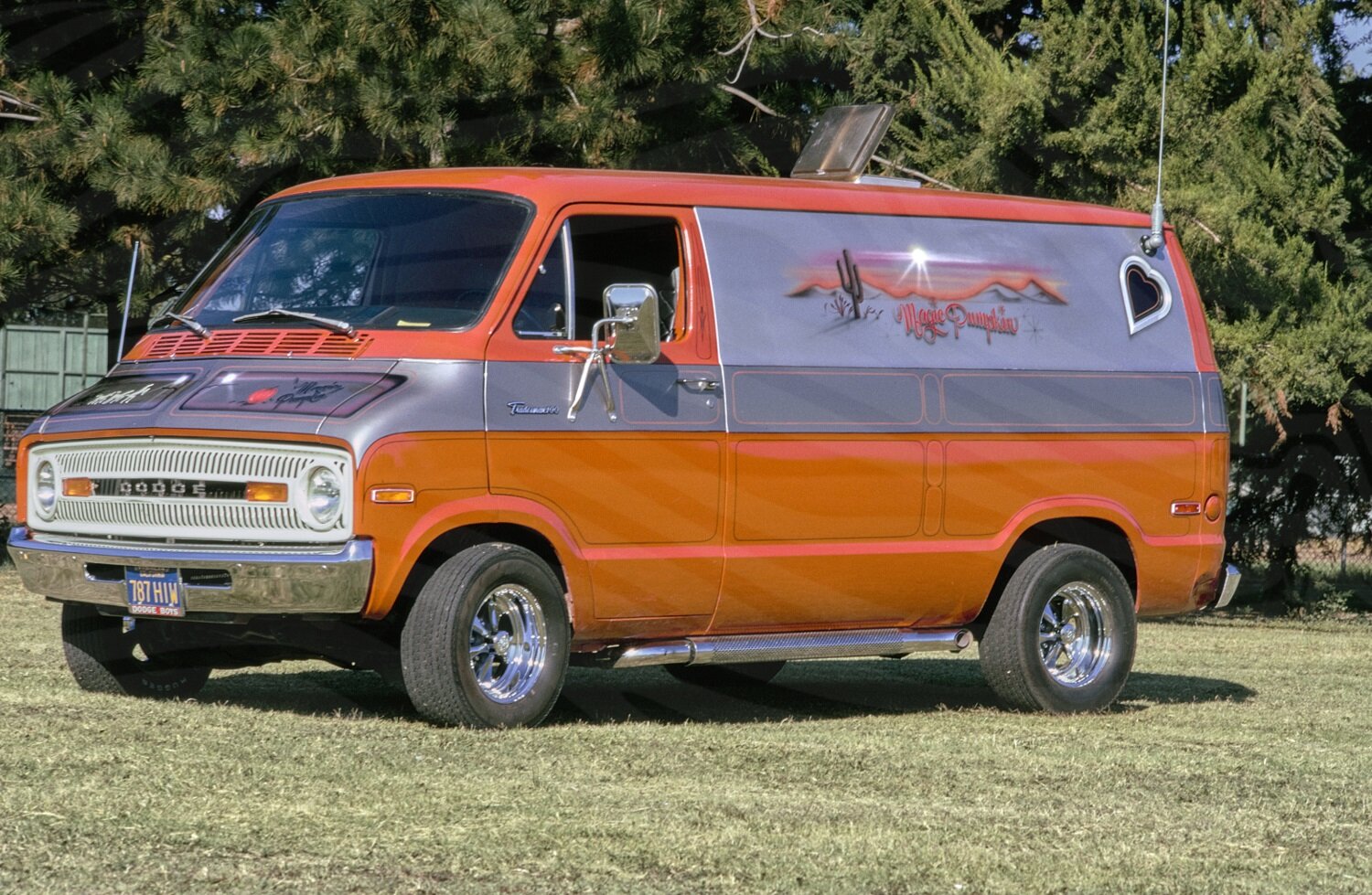PETERSEN ARCHIVE: VANDEMONIUM
What do a portable television, a working cast-iron stove, an electric orange bean bag chair, and a full size brass bed have in common? That’s right, they all adorned the interiors of custom vans. (See if you can find them all in the photographs in this article). If the 1950’s had the hot rod craze, the 1970’s had “the van movement.” Much like a hot rod, a van was an expression of the builder’s personal style. The vans of the 1970s combined the spirit of the hippie movement with car customization. Like ships sailing in an opalescent sea, vans had names, wild paint schemes, and intricate custom interiors. They were the pride of the captains who manned their wheels. Every so often, these vanners would meet up to compare their creations.
This was the concept behind the Van Happening II “the first big gathering of West Coast Vans” organized by the West Coast Vans Club in Trabuico Canyon, California. The Van Happening, noted Steve Green, “was nothing more or less than an old-fashioned picnic updated for the exclusive enjoyment of van owners.” It included an odd assortment of events including “an egg toss, a potato sack race, a beer chug,” and the van tug-of-war competition shown in this photograph.
From “The Van Happening” emerged other events such as the 1973 First West Coast Van Nationals, where Jervis Hill photographed this shag carpeted custom. Nor-Cal Vans organized the event at the Salinas County Fairgrounds in King City, California. In addition to vantastic festivities such as a gymkhana, tire change competition, volleyball games, and a “guessing the number of balloons stuffed inside a van” contest, the West Coast Van Nationals featured a more traditional array of competition categories. These awards highlighted the most unique, best engineered, and best painted vans.
Mike Finn’s glittering green 1972 Chevrolet, shown here, garnered a number of accolades at the gathering including “Vanner’s Choice” and “Best Interior.” To customize the van, Finn added ornamental paintwork and brass-plated side pipes. The interior featured a full size brass bed with plush golden velvet upholstery.
In short, a custom van was more than just a high volume transport vessel or an economic industrial hauler. It was a personal statement. Vans such as the “Magic Pumpkin,” pictured here, offered their occupants a ticket to freedom, to living on the road. Indeed, as Hot Rod Magazine noted in 1974 “a house without chrome wheels, wide tires, side pipes, trick paint and a custom interior is not a home.”
By Kristin Feay
Photography by Steve Green (Van Happening II) and Jervis Hill (First Annual West Coast Van Nationals)










